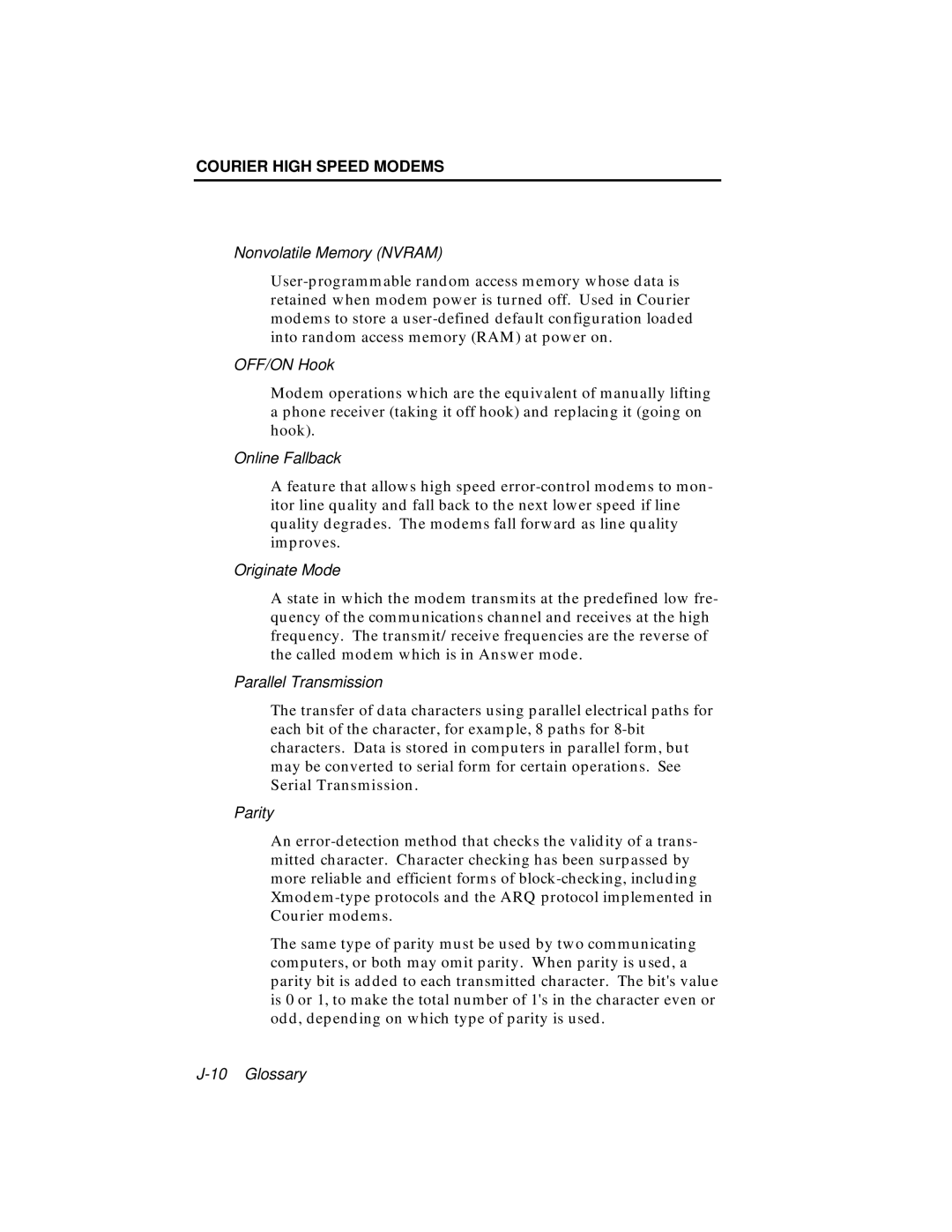COURIER HIGH SPEED MODEMS
Nonvolatile Memory (NVRAM)
OFF/ON Hook
Modem operations which are the equivalent of manually lifting a phone receiver (taking it off hook) and replacing it (going on hook).
Online Fallback
Afeature that allows high speed
Originate Mode
A state in which the modem transmits at the predefined low fre- quency of the communications channel and receives at the high frequency. The transmit/receive frequencies are the reverse of the called modem which is in Answer mode.
Parallel Transmission
The transfer of data characters using parallel electrical paths for each bit of the character, for example, 8 paths for
Parity
An
The same type of parity must be used by two communicating computers, or both may omit parity. When parity is used, a parity bit is added to each transmitted character. The bit's value is 0 or 1, to make the total number of 1's in the character even or odd, depending on which type of parity is used.
